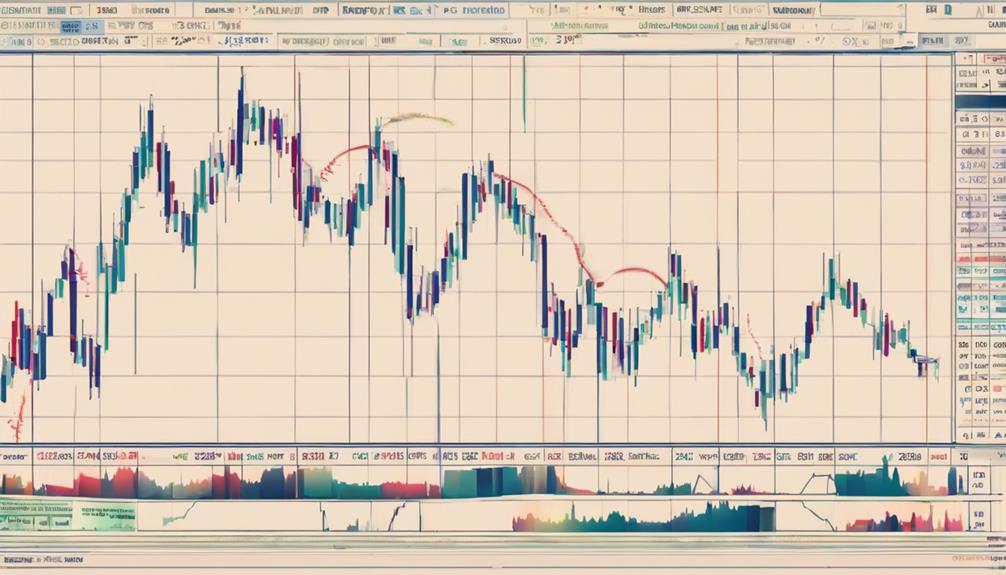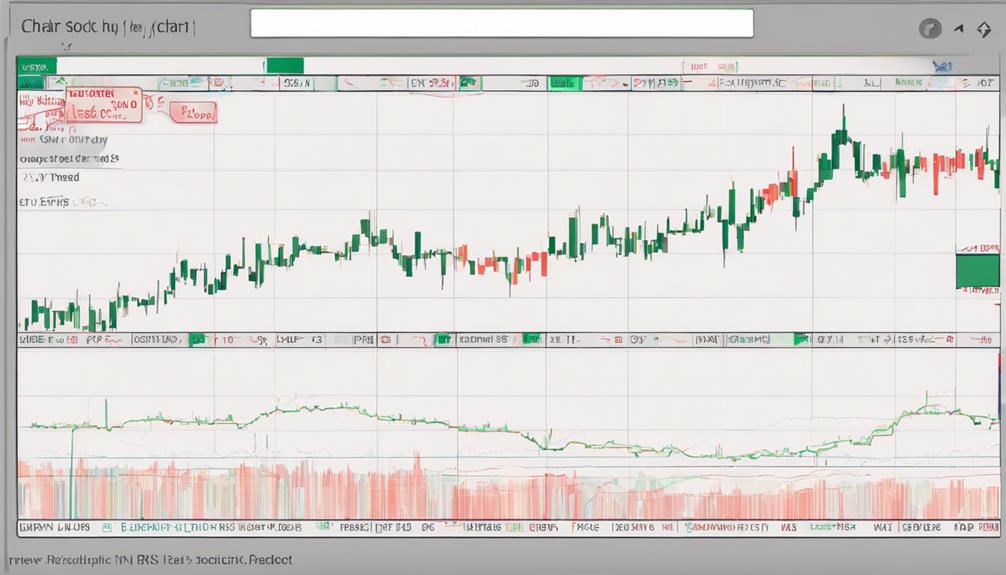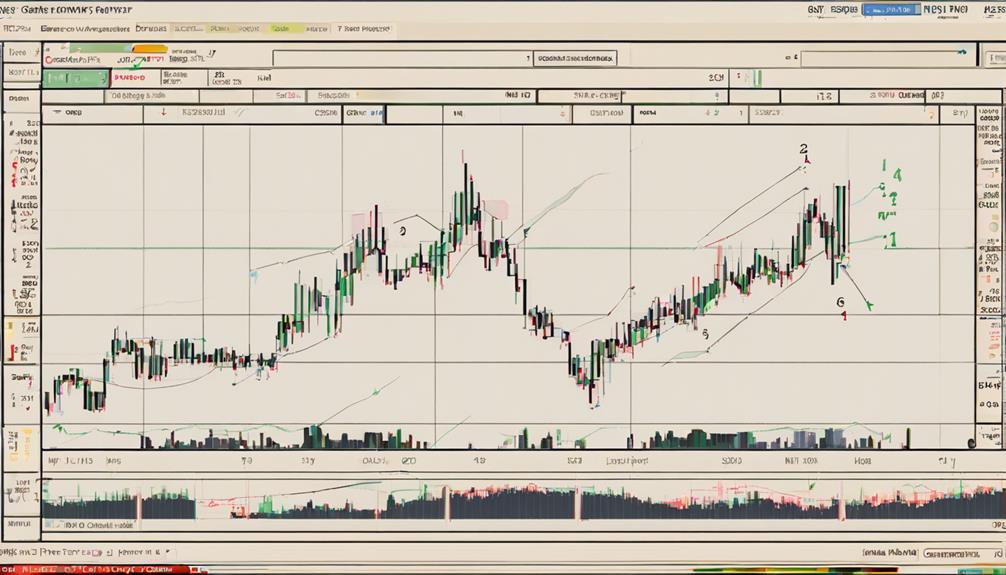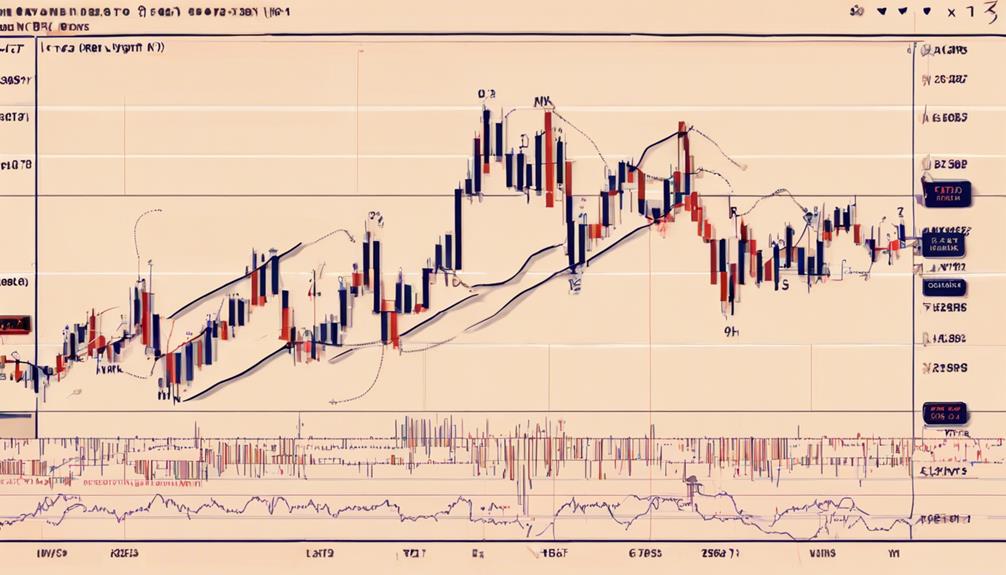Ever wondered how a simple indicator like RSI can hold the key to market reversals? Dive into the intricate world of technical analysis and discover the underlying mechanisms that make RSI a powerful tool for traders.
The reasons behind RSI's ability to forecast market shifts might surprise you and shed light on how professionals leverage this indicator to stay ahead of the curve.
Explore the nuances of RSI's signals and unlock the mystery behind its predictive nature.
Market Reversal Signals With RSI
To identify market reversal signals using the Relative Strength Index (RSI), traders must carefully observe divergences between price movements and the RSI indicator. Bearish divergence occurs when prices reach higher highs while the RSI forms lower highs, indicating a potential downturn.
Conversely, bullish divergence materializes when the RSI shows higher lows while prices exhibit lower lows, suggesting a possible upward trend. RSI failure swings, such as bearish and bullish failure swings, also act as signals for market reversals.
Recognizing these patterns is essential for traders seeking to anticipate market movements accurately. By analyzing these divergences and failure swings, traders can enhance their understanding of RSI signals and effectively navigate market reversals, maximizing profit opportunities.
Interpreting RSI for Market Reversals

Interpreting RSI for market reversals involves analyzing the Relative Strength Index to gauge overbought or oversold conditions and identify potential shifts in momentum.
When RSI surpasses 70, indicating overbought conditions, it suggests a possible bearish reversal. Conversely, RSI dropping below 30 signals oversold conditions, hinting at a potential bullish reversal.
Divergence between RSI and price action is a key indicator for market reversals. Lower lows in price matched with higher lows in RSI may foreshadow a bullish reversal, while higher highs in price alongside lower highs in RSI could indicate a bearish reversal.
Role of RSI in Predicting Reversals

When analyzing market trends, the Relative Strength Index (RSI) plays a crucial role in predicting potential reversals by identifying key overbought and oversold conditions. Here's how RSI contributes to predicting market reversals:
- RSI indicates overbought conditions above 70 and oversold conditions below 30, signaling potential turning points in the market.
- Divergence between RSI and price movements, like bearish divergence, hints at upcoming trend reversals.
- Failure swings in RSI, such as a bullish failure swing, independently forecast market reversals.
- RSI acts as a confirmation tool for trend reversals by validating divergences and extreme RSI levels, especially when combined with other technical indicators for enhanced accuracy.
Understanding RSI's Reversal Patterns

Understanding RSI's Reversal Patterns involves recognizing key signals in market behavior that indicate potential trend shifts. RSI, a momentum oscillator, identifies overbought conditions above 70 and oversold conditions below 30, signaling potential market reversals.
Bearish divergence occurs when price forms higher highs while RSI forms lower highs, hinting at a possible downturn. Conversely, bullish divergence happens when RSI forms higher lows while price forms lower lows, suggesting a potential uptrend.
Additionally, RSI failure swings, such as a bearish failure swing above 70 or a bullish failure swing below 30, provide further signals for market reversals. By closely monitoring these patterns and understanding their implications for price movement, traders can anticipate and capitalize on trend shifts indicated by the RSI.
How Does RSI Signal a Market Reversal in Bearish Conditions?
When understanding RSI in bearish markets, it’s important to recognize how it signals a potential market reversal. Typically, when the RSI indicator reaches or falls below 30, it suggests that the market is oversold and could be due for a reversal. This can be a sign for traders to consider a potential buying opportunity.
RSI's Impact on Market Direction

RSI significantly influences market direction, particularly when combined with other technical indicators for confirmation. When analyzing RSI's impact on market direction, consider the following:
- RSI indicates market reversal through identifying overbought conditions above 70 and oversold conditions below 30.
- Market reversal signals emerge when RSI diverges from price movements, signaling a potential shift in direction.
- Traders utilize RSI to anticipate market reversals by monitoring momentum shifts reflected in the indicator's readings.
- RSI's ability to detect extreme conditions aids traders in preparing for potential market reversals ahead of time.
Frequently Asked Questions
Is RSI a Reversal Indicator?
Yes, RSI is a reversal indicator. It helps identify overbought and oversold conditions by diverging from price movements. Watch for extreme levels above 70 or below 30. RSI also detects shifts in buying or selling pressure.
What Does the RSI Indicator Tell You?
RSI, or Relative Strength Index, informs you about overbought or oversold market conditions based on price momentum. Levels above 70 indicate overbought, potentially signaling a reversal, while below 30 suggests oversold conditions preceding a reversal.
What Is the Indicator for Trend Reversal?
When considering trend reversal, pay attention to divergences between price movements and RSI readings. Higher price highs with lower RSI highs suggest momentum slowdown, whereas lower price lows with higher RSI lows may signal an upcoming reversal.
Why the RSI Is the Best Indicator?
When it comes to why the RSI is the best indicator, its precision in pinpointing overbought and oversold conditions, tracking momentum, and revealing divergences to confirm reversals make it a top choice for traders seeking market insights.
Conclusion
As the Relative Strength Index (RSI) dances between overbought and oversold territory, it whispers secrets of market reversals. Like a skilled fortune teller, RSI reveals hidden patterns and divergences, guiding traders towards profitable entry and exit points.
Its impact on market direction is undeniable, offering a roadmap through the turbulent seas of trading. Embrace the power of RSI, and let its signals illuminate your path to success in the ever-changing world of markets.
